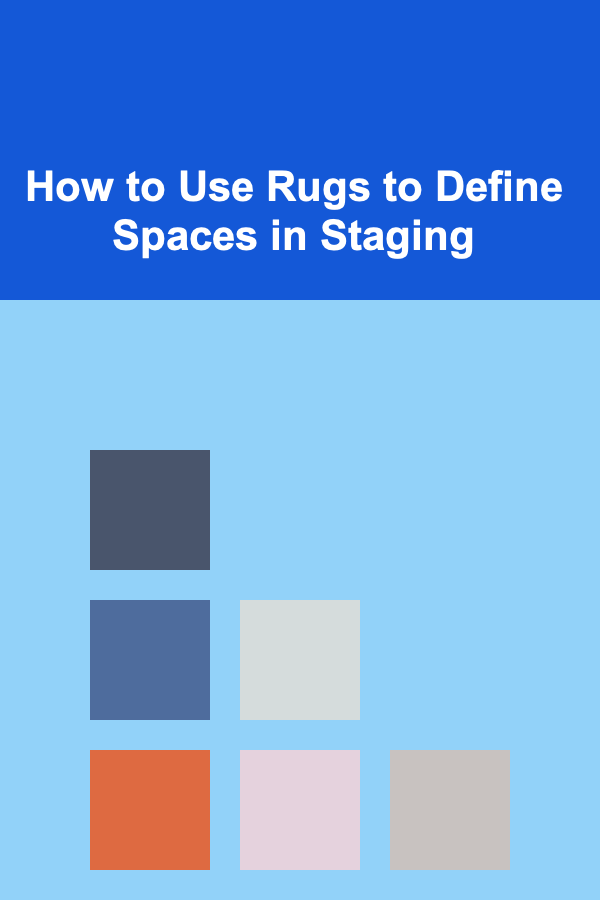How to Choose the Best Water Tracker Planner for Your Personality
ebook include PDF & Audio bundle (Micro Guide)
$12.99$10.99
Limited Time Offer! Order within the next:
Water is essential to our well-being, and maintaining proper hydration is a key factor in promoting overall health. Whether you're an athlete looking to optimize your performance or someone simply trying to improve your daily routine, staying hydrated is one of the most important habits you can cultivate. But keeping track of your water intake can sometimes be challenging, especially when you're juggling multiple responsibilities and trying to maintain other healthy habits.
A water tracker planner can be an effective solution for ensuring that you meet your hydration goals. These planners can help you monitor how much water you're drinking, set reminders, and track your progress. However, choosing the right water tracker planner is not a one-size-fits-all decision. The planner that works best for you will depend on your personal preferences, lifestyle, and goals.
In this article, we'll explore how to choose the best water tracker planner for your personality. From understanding the different types of planners available to tailoring your selection to your habits and needs, we will provide you with a comprehensive guide to making the right choice.
Understand Your Hydration Needs
Before diving into the specifics of choosing a water tracker planner, it's important to first understand your hydration needs. The amount of water you need to drink each day depends on a variety of factors, including your age, gender, activity level, and the climate you live in.
Personalized Hydration
- Age & Gender: Generally, men require about 3.7 liters (125 ounces) of water per day, and women require about 2.7 liters (91 ounces). However, these recommendations can vary.
- Physical Activity: If you're physically active, you'll need more water to replace fluids lost through sweat. Athletes or individuals who exercise regularly may need to drink an additional 500-1000 milliliters (17-34 ounces) of water per hour of exercise.
- Climate: In warmer climates, or if you live at high altitudes, you may need to increase your water intake due to higher sweat rates.
Once you have a rough idea of how much water you need to consume daily, you'll have a better idea of the features you should look for in a water tracker planner. This will help you decide whether a simple daily tracker is enough, or whether you need a more advanced planner that includes additional features such as workout tracking or seasonal hydration reminders.
Types of Water Tracker Planners
Water tracker planners come in various forms, each designed to cater to different personalities and needs. Some people prefer a physical planner that they can write in, while others may opt for a digital solution. There are also hybrid options that combine elements of both.
A. Physical Water Tracker Planners
If you enjoy the tactile process of writing things down, a physical water tracker planner might be your best choice. These planners often include pre-designed templates where you can log your daily water intake, set goals, and track progress.
Pros:
- Tactile Feedback: Writing by hand can create a sense of mindfulness and intentionality, making it easier to stay focused on your goals.
- No Need for Technology: If you're someone who wants to disconnect from screens and technology, a physical planner is a great option.
- Customizable: Many physical planners allow you to personalize the layout and design, helping you create a system that works for you.
Cons:
- Limited Features: Physical planners might not offer advanced features like automatic reminders, charts, or integration with other apps.
- Portability: You need to carry the planner with you if you want to track your intake while on the go.
B. Digital Water Tracker Planners
For those who are tech-savvy or prefer convenience, digital water tracker planners can be an excellent option. These planners are often apps or spreadsheets that you can use on your smartphone, tablet, or computer. They may come with features like automatic reminders, customizable tracking, and integration with other health apps.
Pros:
- Convenience: You can easily track your water intake anytime, anywhere, using your phone or other digital devices.
- Automatic Reminders: Digital planners can send you notifications to remind you to drink water, making it easier to stay on track.
- Advanced Tracking: Many digital apps allow you to track your water intake alongside other health metrics such as exercise, nutrition, and sleep.
Cons:
- Screen Dependency: If you're trying to limit your screen time, a digital tracker may not be ideal.
- Learning Curve: Some digital planners may require a bit of time to learn and set up properly.
C. Hybrid Planners
Hybrid planners combine physical and digital elements, offering the best of both worlds. For example, you might use a physical planner to jot down daily intake and progress, while simultaneously using a digital app for reminders and advanced tracking.
Pros:
- Flexibility: Hybrid planners allow you to enjoy the best of both worlds -- the mindfulness of writing by hand and the convenience of digital reminders.
- Customization: You can tailor the hybrid system to your needs, using digital tools for specific tasks and physical tools for others.
Cons:
- Complexity: Managing both physical and digital components may feel cumbersome for some people.
- Time-Consuming: If you enjoy writing by hand but don't want to forget digital reminders, you'll need to dedicate time to both.
Tailoring the Planner to Your Personality
When selecting a water tracker planner, consider your personality traits, habits, and lifestyle. The right planner will reflect your preferences and complement your daily routine.
A. The Organized Planner
If you thrive on structure and enjoy having a detailed schedule to follow, a highly organized planner with predefined sections may be the best fit. Look for a planner that includes:
- Daily tracking: Specific spaces for tracking water intake by the hour or by the glass.
- Weekly or Monthly Layouts: Space for reflecting on your progress and setting long-term hydration goals.
- Goal Setting: Sections dedicated to setting hydration goals and reviewing your achievements.
For the organized personality, physical planners with ample room for writing and tracking are often the most satisfying. A physical water tracker with additional space for notes, reflections, and self-assessments can work well for this type.
B. The Minimalist Planner
If you're someone who prefers simplicity and hates feeling bogged down by too much detail, a minimalist planner is probably your best option. Choose a planner with a straightforward design that focuses solely on tracking water intake with:
- Simple daily logs: Just enough space to jot down how much water you've consumed.
- No unnecessary sections: Eliminate distractions and keep the focus on hydration.
- Basic reminders: Simple notifications without overwhelming you with extraneous information.
For this type of personality, digital water tracker apps or simple physical planners with basic features are often ideal. These planners will help you stay on track without making the process overly complicated.
C. The Motivated Achiever
If you are highly goal-oriented and enjoy the challenge of tracking progress, look for a planner that includes motivational elements to keep you engaged. Some features to look for:
- Challenges and Rewards: Planners with built-in challenges, milestones, and rewards can help keep you motivated.
- Tracking Progress with Graphs and Charts: Visual representations of your hydration progress can provide a sense of accomplishment.
- Incorporation of Other Goals: A planner that combines hydration with other fitness or wellness goals, such as exercise, sleep, or nutrition.
Motivated achievers often thrive with digital planners that offer gamification features and social sharing options, which allow them to track their progress and share their achievements with others.
D. The Visual Learner
If you respond best to visual stimuli, consider choosing a water tracker planner with a design that emphasizes visuals. This could include:
- Color-Coded Sections: Use different colors for tracking different types of water intake or for highlighting progress.
- Charts and Graphs: Visual representations of your daily, weekly, or monthly hydration can provide clear and immediate feedback on your progress.
- Customizable Designs: Choose a planner with aesthetic appeal, allowing you to personalize it with images, stickers, and other design elements that make it visually engaging.
Planners with plenty of room for visuals or those that offer app integrations for syncing hydration data with other health metrics may work best for those who learn visually.
E. The Social Butterfly
If you enjoy sharing your progress and engaging with others, look for a planner that incorporates social sharing and community features. A planner with the following attributes could suit you:
- Community Support: Some digital apps have social media integration where you can join groups or challenges with other users.
- Sharing Features: The ability to share your hydration progress or daily achievements with friends or social media can make tracking more fun and motivating.
Digital apps with built-in social features or planners that encourage accountability partnerships are ideal for individuals who enjoy the support of a community.
Look for Flexibility and Customization
The best water tracker planner should allow for some degree of flexibility and customization. Everyone's hydration needs and habits are different, so your planner should be adaptable to your individual lifestyle. Consider the following:
- Customizable Layouts: Whether it's a digital app or a physical planner, the ability to modify the layout and sections can be helpful for tailoring it to your specific needs.
- Variety of Reminders: Some people respond better to gentle reminders, while others need more frequent nudges. A planner that allows you to customize the frequency of reminders can be particularly useful.
- Adaptability: Your hydration needs might change over time, depending on your physical activity, environment, or health conditions. Choose a planner that can evolve with you.
Conclusion
Choosing the best water tracker planner for your personality is all about matching the planner's features with your individual habits, preferences, and lifestyle. Whether you prefer a simple physical journal, a digital solution, or a hybrid system, the right planner can support you in achieving your hydration goals and improve your overall health. Understanding your hydration needs, considering your personality, and selecting a planner that reflects these factors will help you stay on track and make hydration an easy and rewarding part of your daily routine.
Reading More From Our Other Websites
- [Organization Tip 101] How to Use Magnetic Strips to Organize Scissors and Tools
- [Home Party Planning 101] How to Organize a DIY Party Game Night for All Ages
- [Personal Investment 101] How to Build and Sell Deep Learning-Powered Apps for Profit
- [Personal Care Tips 101] How to Identify Truly Sustainable Personal Care Brands and What to Look for on Their Labels
- [Organization Tip 101] How to Use Digital Tools for Essential Oil Inventory Management
- [Home Soundproofing 101] How to Soundproof a Baby's Room for Better Sleep
- [Home Holiday Decoration 101] How to Style Your Bedroom with Holiday Bedding for a Festive Feel
- [Personal Investment 101] How to Build Wealth by Investing in Crowdsourced Ventures
- [Organization Tip 101] How to Use Storage Ottomans for Extra Seating and Space
- [Organization Tip 101] How to Use Checklists for Home Inventory Efficiency

How to Find Affordable Furniture That Looks Expensive
Read More
How to Keep Your Emotions in Check While Investing
Read More
How to Perform Routine Checks on Your Home's Electrical Panel
Read More
How to Use Rugs to Define Spaces in Staging
Read More
How To Take Stunning Food Photography
Read More
10 Tips for a Compact and Effective First Aid Kit for Hiking
Read MoreOther Products

How to Find Affordable Furniture That Looks Expensive
Read More
How to Keep Your Emotions in Check While Investing
Read More
How to Perform Routine Checks on Your Home's Electrical Panel
Read More
How to Use Rugs to Define Spaces in Staging
Read More
How To Take Stunning Food Photography
Read More